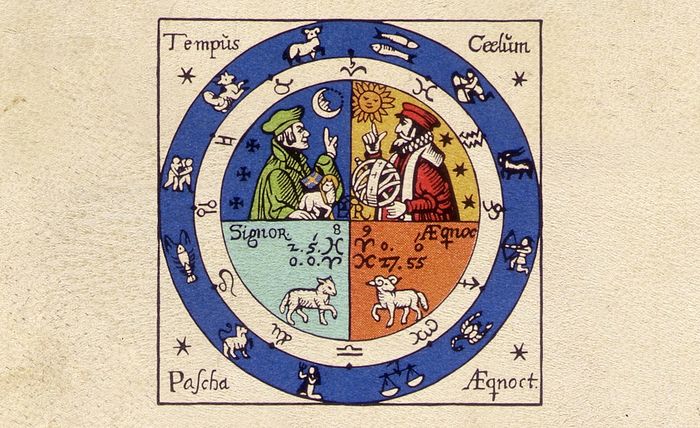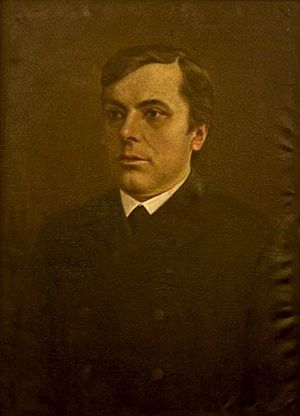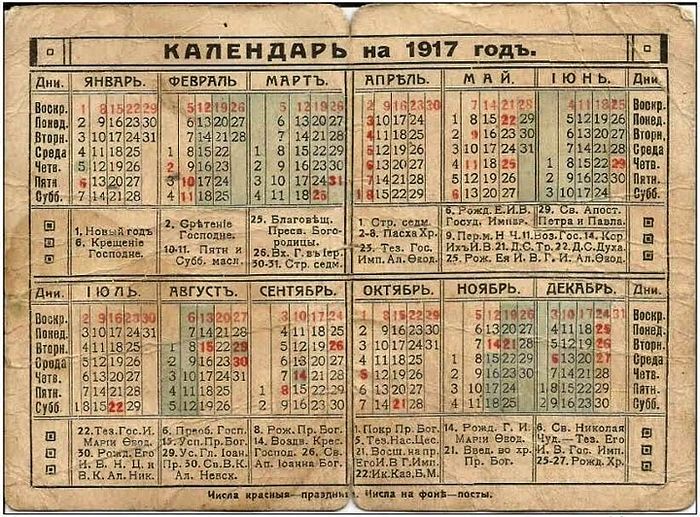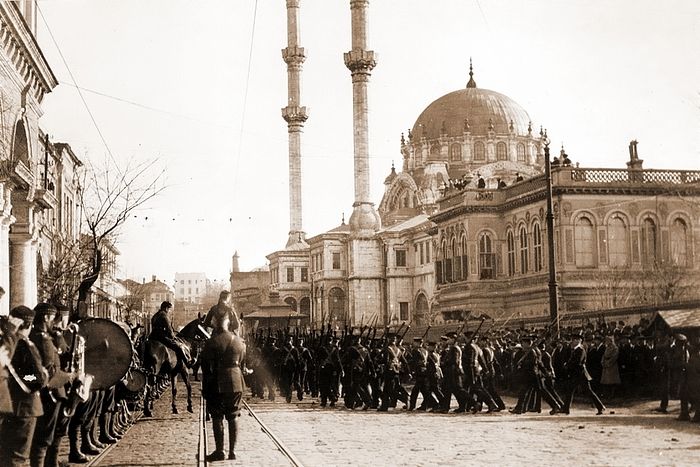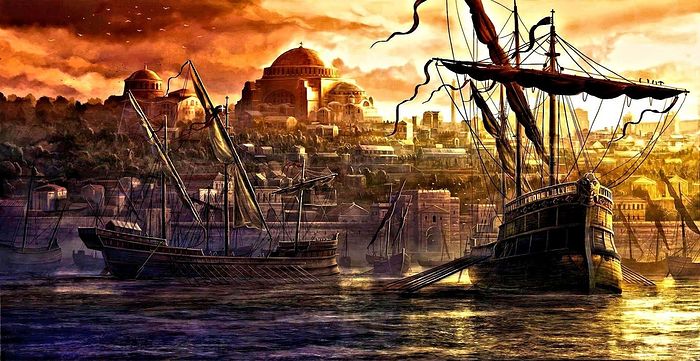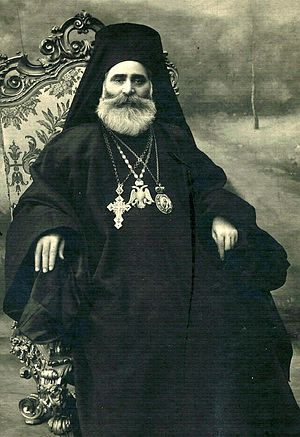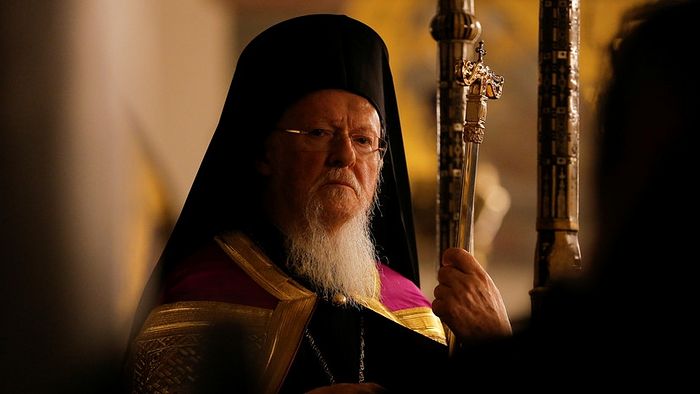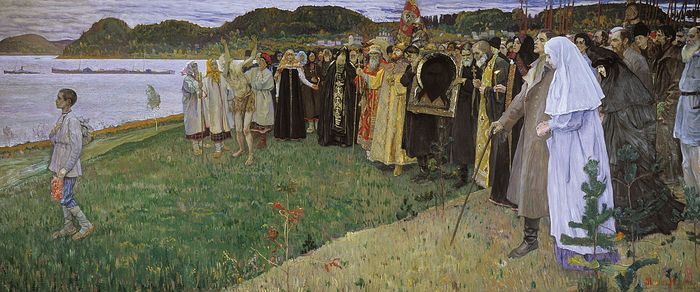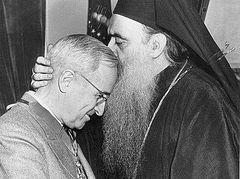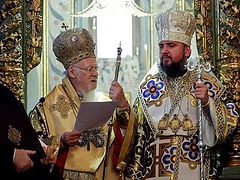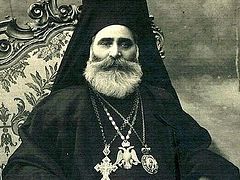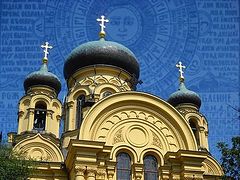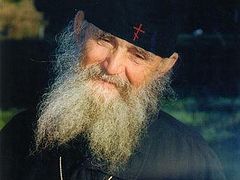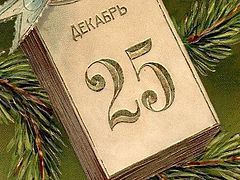When and why did the Patriarchate of Constantinople introduce the new calendar? How is it connected with the current Church conflict in Ukraine? We discussed these subjects with Pavel Kuzenkov, Ph.D in Historical Sciences, teacher of the Sretensky Theological Seminary, and expert in Christian chronological systems.
In the sixteenth century the Roman popes were trying to prove that they still controlled global processes
—Can you tell us which Local Churches adopted the new calendar? When and why did they do it? To be honest, we are especially interested in the Patriarchate of Constantinople.
—The calendar issue shouldn’t be considered in isolation from the following two key moments. Firstly, the integration of the Orthodox world into Western European civilization which began long ago. In Russia, for example, this process began in the seventeenth century.
Secondly, the issue of Church-state relations. In the majority of Orthodox countries the calendar was “split” in two—the official state calendar and traditional Church calendar—because in most cases it was the state that undertook this integration into Western civilization.
In our country this process was initiated by Peter I (also known as “the Great”). It was he who introduced the European calendar and chronology in 1700. Luckily for us, neither England, nor Holland, nor other Protestant countries of that time (which the tsar tried to follow) had adopted the papal Gregorian calendar by that moment. More than that, the Protestants were engaged in a heated debate over the Gregorian calendar—they “rose up in arms” about the Gregorian reform and resisted it for a long time.
—Why?
—Because whatever comes from the pope is a priori evil for the Protestants.
We should also take into account that the idea of the calendar reform of Pope Gregory XIII in 1582 was politically motivated. By the end of the sixteenth century, when Protestant sentiments had spread across Europe, the popes were trying to prove that they were still able to control global processes related to all of humanity. The Roman Catholic Church was in a deep crisis that was mainly triggered by criticism from scientists. Criticizing papism, the Protestants relied on scientific methods. But papism suddenly took over the initiative. Closer relations between the Church and the state were established in the Catholic world: Universities and academies were opened, and the status of scientists rose significantly. Natural sciences appeared in the foreground, though it was not to last. In the following century, according to tradition, Galileo Galilei tried to justify himself before the Inquisition, whispering: “And yet it moves.” And in the sixteenth century the popes were favorably disposed towards the Copernican heliocentric system (by the way, Copernicus was Doctor of Canon Law). And the calendar reform was based on the work of eminent astronomers. The invention of the new Gregorian calendar became an important symbol of the alliance between the Roman Catholic Church and science. And its adoption all over the world was visible evidence of the power of the papal authority.
And if the new calendar had been adopted in the Protestant countries during the reign of Peter I, then Russia would surely have changed over to it as well. But Great Britain didn’t adopt it until 1752, and Sweden not until 1753. And the calendar issue seemed to have been forgotten in Russia after that. Though there is evidence that Catherine II decided to adopt “the new style”, the turbulent French Revolution and the burning of Moscow by Napoleon slowed down the process of rapprochement between Russia and the West for a long time. The question of the unification of the calendar was raised again under Nicholas II.
—What for?
—First and foremost, for practical convenience. By the way, the Protestants chose the Gregorian calendar solely for pragmatic reasons. Above all, it ensured benefits for trade because differences in the calendar entailed extra costs and led to mistakes and losses.
Either the new calendar or the Paschalia
Indeed it was not easy to answer the question as to why Russia should stick to its own, special calendar while Europe and America followed the unified calendar system. Weighty arguments were needed. By the twentieth century Russia had become an integral part of the civilized world, and very many stood for the adoption of the Gregorian calendar. However, Tsar Nicholas II, who in 1899 set up a committee to review the calendar, decided not to rush things. In my view, the voice of our great Church historian Vasily Vasilievich Bolotov played a crucial role. He provided a well-substantiated explanation for why Russia should continue to observe the Julian calendar: because the Orthodox Paschalia is based on it. If we introduce the Gregorian calendar, our Paschalia will cease to function as a mathematical system.
The fact is that the Alexandrian Paschalia, which was worked out in the fourth century, is quite a refined mathematical instrument intended to make two astronomical cycles—the solar and lunar cycles, along with the week cycle—agree with one another. As a result 532 years make up a complete cycle of Pascha and the movable Church feasts that are related to it. But the main thing about this cycle is that it is interwoven with the Julian year of 365 and one-quarter day. If we replace the Julian year with the Gregorian year underhand, the cycle will collapse. That is why there is no Gregorian Paschalia. Pascha according to “the new style” is calculated by means of manipulations with the traditional Alexandrian Paschalia, involving complex corrections to it. For the Paschalia is at the heart of the liturgical Church calendar. In effect, the following question arises: either the new calendar or the Paschalia. And it is impossible to combine both.
Bolotov’s arguments produced an effect, and it was decided at the state level that this process should be examined further and not speeded up, while the country’s tradition should be maintained. Among the favorable circumstances was the fact that many other countries of that time, such as the Ottoman Empire and the Balkan States, lived by the same calendar. That is, it was not an exclusively Russian peculiarity but a distinctive characteristic in a number of countries of the former Byzantine world.
The Julian calendar became a symbol of old Russia
—When did other countries begin to adopt the new calendar?
—In course of time the calendar issue became ever more pressing. The decisive milestone in this story was the First World War. As we know, Bulgaria participated in this war on the side of Germany and Austria-Hungary, and the allies issued an ultimatum demanding the immediate acceptance of the European calendar for the coordination of military operations, troop transportation, and so on. Thus the Bulgarians were the first to adopt the new calendar as early as April 1916, at the height of the First World War.
But it was important that the Bulgarian Orthodox Church clung to its calendar. It is the first time we encounter this divergence, when an Orthodox country adopts the Western European calendar without affecting Church tradition.
In Russia, the Provisional Government put this question on the agenda in 1917 and would surely have resolved it in favor of the reform, but it so happened that Lenin was to resolve it in January 1918, and he decided upon the reform without hesitation. It was formulated in a very interesting way: the “Decree of the Soviet of the People’s Commissars on the Imposition of the Western European Calendar in the Russian Republic” read that it was necessary “to establish in Russia the same time calculation as in the majority of the civilized countries.” The phrase “the majority of the civilized countries” perfectly characterizes Bolshevism: Bolshevism was by no means an anti-Western movement, as some mistakenly believe; rather, it was a radical, extreme form of Westernism.
Besides, the adoption of the new calendar was one of the plans of the Bolsheviks because the October Revolution had been orchestrated as part of a “world revolution”. The Russian Orthodox Church became the only the keeper of tradition. It was a split on the level of civilizations and worldviews, and not only of the calendar. Thus the Julian calendar became a symbol of old Russia and the resistance to Bolshevism. That is why the Voluntary Army and the anti-Bolshevist governments clung to the old calendar so persistently, while allies from the Entente suggested that they carry out the calendar reform.
When the Bolsheviks seized power and it became clear that the changes were serious and long lasting, for the Russians—people of traditional values—the old calendar became the surviving symbol of old culture together with the restored patriarchate. It is a symbol that must be cherished.
An ultra-ecumenical project
The twentieth century saw the dismantling of world history. This collapse was caused by Europe’s radical invasion of other civilizations towards and after the end of the First World War. Thus, the Ottoman Empire had adopted the new calendar a little earlier than Soviet Russia—in March 1917, shortly before its own disintegration. It is important that the Patriarchate of Constantinople existed in this very state. In 1919, Yugoslavia and Romania switched to the Gregorian calendar, while the Serbian and Romanian Orthodox Churches continued to adhere to the Julian calendar.
Interestingly, the end of the First World War was marked not only by the establishment of the League of Nations, but also by the beginning of the project of “the League of Churches”. And the hierarch of the greatest authority in world Orthodoxy—that is, the Patriarch of Constantinople, was supposed to head it. Not only was this project discussed, it had even been approved by the overwhelming majority of Local Orthodox Churches by 1920. This should be remembered. In fact the unification of all Churches in the world was on their agenda—not only Orthodox, but also Anglican and, in the long term, Catholic Churches. In a word, it was an ultra-ecumenist project.
—Who initiated this ultra-ecumenist project?
—It was initiated by Dorotheos, then Locum Tenens of the Patriarchal Throne of Constantinople. At that time Constantinople was occupied by the Entente (1919-1920). Since the Russian Church seemed to be vanishing from the scene of action, the Greeks, the Philhellenes, headed by Constantinople, took the flag of Orthodoxy into their hands. Now they claimed to be the keepers of Orthodoxy, while Russia had disappeared from the scene. So they counted on Britain, the main winning nation in the First World War. They deemed it necessary first to unite with the Anglicans on the ground of the non-recognition of the Catholics and then to initiate talks with Catholics (behind whom was France). It was clear that France was a player too, but Catholicism was a less suitable contractual party than Anglicanism. That is, they were going to ensure Eucharistic communion between different Churches outside of the context of the Creed.
But this project failed because of the offensive of Atatürk. Then only two elements remained as the rudiments of this ambitious project: the recognition of Anglican ordinations and the adoption of the new calendar. They were implemented by Patriarch Meletius (Metaxakis) between 1922 and 1923.
It was the end of that ambitious plan, and a very dramatic one at that. Meletius became the patriarch at an inopportune moment: Scarcely had he entered Constantinople on an English warship when the Kemalists occupied the city. The Asia Minor Catastrophe broke out, with the deportation of all Greeks who had lived in the peninsula. Negotiations were held for months in Lausanne to determine the fate of the Greeks in Constantinople. Meanwhile the Turks demanded the expulsion of all Greeks, including the patriarch. With great difficulty the French and English managed to persuade the Turks to allow Meletius to remain in Constantinople with the provision that he be debarred from all political, cultural and other activities, have no more ties with Greece, become a citizen of Turkey, etc. It can be concluded that Patriarch Metaxakis’s calendar reform was a feverish attempt to establish the status of Constantinople as the center of world Orthodoxy.
The so-called Pan-Orthodox Congress in Constantinople in 1923 spilled over into a scandal. Firstly, not all Local Orthodox Churches were represented; and secondly, in the midst of the meeting Meletius was assaulted. He was beaten up in Constantinople by a mob of Turkish fanatics.
It was then that the Phanar began this political game which continues to this day. It found itself “between three fires”. On the one hand, in the eyes of the worldwide Orthodox community the Phanar was still its leader, whose main obligation was to keep Orthodox tradition in good faith. On the other hand, there was the Western world which was dividing Turkish territory. The Ottoman Empire no longer existed, Turkey was becoming pro-Western, and the Western powers demanded certain policies from Constantinople, promising some kind of protection in return. And, lastly, there was the East, which displayed hostility towards Constantinople in all manifestations, whether Muslim or Kemalist. For the East, Constantinople was a double foe. Firstly, it was a cultural and religious enemy. It was believed that Turkey’s defeat in the First World War was caused by the betrayal of the Orthodox and other Christian peoples who were living in the Ottoman Empire, namely the Armenians and Greeks. This most probably accounts for the genocide of Armenians [and Greeks]. It was also the Ottoman Empire’s internal complex, since Muslims made up less than half of its population. On top of that, their demographic statistics were catastrophic. Christian families had twice as many children as Muslim families. It was in the context of this psychosis that the terrible phenomenon of genocide developed.
Secondly, for the Turks Constantinople was a geopolitical enemy. It was supported by the West, which humiliated them, introducing its own traditions, ways and so on. Among other things, the calendar reform was meant to mark the unity between Constantinople and the Western world—unity that guaranteed its inviolability.
—Inviolability from whom? From the Turks?
—Yes, from the Kemalists. There was a very strong anti-Phanariot, anti-Greek movement in Turkey at that time. Eventually a compromise was reached. Constantinople became the center through which Atatürk’s Government negotiated with the West.
The decisions of the Congress of 1923 had practical implications. The first [Orthodox] country to adopt the new calendar (for civic and Church use) was Greece. It took place in March 1924. It was then that the Churches of Constantinople and Cyprus changed over to it as well.
—And the Church of Greece, too?
—According to the Greek Constitution, there was no Church-state separation there. In addition, Meletius and his plans were supported in some circles of the Greek political Establishment.
This was followed by domino effect. One after another the Greek patriarchates adopted the new calendar. However, the process dragged on. The most interesting thing was that in the time of Meletius, the Patriarchate of Alexandria, the second most important and authoritative patriarchate, was headed by Patriarch Photius (1900-1925), who spoke out strongly against the calendar reform and said that under no circumstances would the Church of Alexandria accept it. In the end, after Photius’s the death, he was succeeded (with the help of the English) by Meletius Metaxakis who had earlier been expelled from Constantinople by the Turks. He became the Patriarch of Alexandria and immediately carried out the calendar reform.
We should take into account that the new calendar was not based on the Gregorian calendar. That would have been canonically impossible because the Gregorian calendar had been condemned and anathematized at one Council of the Eastern Patriarchs in the eighteenth century. A new calendar was developed by the Serbian astronomer Milutin Milanković instead of it. The two calendars match up and will continue to do so until 2800. Their difference grows by one day for 100 years and then they match up again. The calendar of Milanković is more complicated than the Gregorian calendar, but formally they are the same. It should be taken into account that no Orthodox Church except for the Finnish Church ever adopted the Gregorian calendar.1
The split in the Orthodox world
—And what was the situation in Russia at that time?
—The situation in Russia was dramatic. When it emerged that almost all the Orthodox Churches had switched to the new calendar, Patriarch Tikhon, who had just been released from prison and narrowly escaped martyrdom, issued the decree introducing the new calendar. This was in October 1923. But several weeks later the news reached the patriarchate that many of the Local Churches had not accepted the reform. Then the patriarch withdrew the decree on the introduction of the new calendar. It was caused not only by news from Jerusalem but also by the harsh reaction of Orthodox people. The mid-twenties saw the peak of the confrontation between the canonical Church and the Renovationists, who were supported by the Bolshevik authorities. The so-called “Second All-Russian Council”, which was convened by the Renovationists in 1923 and which unlawfully deposed St. Tikhon, welcomed the reform. In June 1923, just a few days after Metaxakis’s “Pan-Orthodox Congress”, the Renovationist Supreme Church Council declared the introduction of the revised Julian calendar. By the way, under the next Patriarch of Constantinople, Gregory VII, Constantinople officially recognized the Renovationists, and suggested that Patriarch Tikhon resign and abolish the patriarchate… Thus the Phanar maintained stable contacts with the Renovationists.
The point is that by 1924 it came home to Constantinople that it was hopeless to expect help from the English. Under those circumstances the Phanariots sought to establish contacts with the Soviet authorities in the hope of gaining their support to lessen the pressure from Kemalists.
—What happened with other Orthodox countries?
—Bulgaria and Serbia adopted the new calendar, but the respective Local Churches continued to use the old one. The Church of Greece, the patriarchates of the East, and Muslim countries also adopted the new-style calendar, whereas the Patriarchate of Jerusalem and Holy Mount Athos decided to preserve the Julian calendar, as did the Georgian and Russian Orthodox Churches.
Then the Romanian Church switched to the new calendar together with the state—it happened even before the war. And after the Second World War the Bulgarian Orthodox Church quite unexpectedly chose the new calendar as well. As for the Serbian Orthodox Church, it never accepted the new calendar, even though it was invented by a Serb.
—Thus, in some sense, the Orthodox world is split over the calendar.
—You are right. Some Orthodox Churches celebrate the Nativity of Christ on December 25, while others celebrate it on January 7. So when somebody says, “Catholic Nativity”, I always reply: “But what about the Greeks? They are Orthodox, but they celebrate the Birth of Christ on December 25.” And any Orthodox believer can celebrate Christmas twice, namely on December 25 and January 7, if he wants. This applies to all other fixed feasts as well. Paradoxically, the calculation of the movable feasts (those dependent on the Alexandrian Paschalia) remained the same for both calendars. Thus, the defect of that reform is that while it adopted the new calendar, it didn’t develop the Paschalia which would correspond to this calendar. Currently, the Orthodox countries and Churches that once adopted the new calendar live in a paradoxical situation. They use the revised Julian calendar for the fixed feasts and use the Julian calendar for the movable feasts. Hence they have such absurd phenomena as the disappearance of the Apostle’s Fast and other inconsistencies and shifts. But what is really bad is the splitting of the tradition.
Curiously enough, recently we have seen a reverse process. Thus, in 2014 the Polish Orthodox Church returned to the Julian calendar. In 2015, with the blessing of the Vatican the Catholics of the Holy Land changed directly over to the Orthodox Paschalia!
Essentially, today the calendar issue is no more than the echo of a trend that has exhausted itself. This trend involved the absorption of Eastern Orthodox civilization by Western civilization.
An echo of the rejected trend
—But it seems it’s quite the other way around: This trend is still developing successfully nowadays.
—On the one hand, it is evolving because it hasn’t yet been stopped. But, on the other hand, it has exhausted itself ideologically. According to that ideology, the Byzantine project and Orthodox civilization were defective and inferior to Western civilization.
—But the boundaries of this world have effectively shrunk to the boundaries of Russia.
—Yes, that is clear. But the myth about Western European civilization’s alleged superiority over Eastern European civilization has been dispelled on the scientific, fundamental and methodological levels by Western scientists themselves. It is universally recognized that Western European culture has no undisputed advantage over Eastern European, Byzantine culture. But old ideas are still alive in public opinion, in the public information space. They are still held through inertia, but they have lost ground. In this situation Russia appears to be the only bearer of the old Byzantine tradition, albeit involuntarily. And the Western world spurs it on to this.
This is astonishing. We don’t understand why the West has such an attitude towards us. But it is crystal clear to the West that absolutely different values underlie Russian mentality and culture. As Stephen Báthory 2 wrote to the pope: “Orthodox Christians are worse than Jews.” You can try and reform Orthodox people or bring them over to your point of view, but you will never change them. Orthodox are “good-for-nothing” for Western European civilization. The only thing you can do with them is trash them by making Orthodox nations fight against each other.
“A believer and intriguer”
—Recently it emerged that Patriarch Meletius (Metaxakis) of Constantinople was reputedly a freemason. Is that true?
—That is nothing new. Almost all Greek patriarchs of that time were masons. His church activities are far more criminal—for example, he was elected the Patriarch of Constantinople after being deposed by the Church of Greece.
—How did that come about and why?
—This story is quite involved. Most likely it was a conflict over money. The rich American Church had previously been under the omophorion of the Russian Church, for the Russians were the first to bring Orthodoxy to the American continent.3 After Russia had withdrawn from the political arena the Greeks got their hands on the whole of the American continent. The Church of Greece was the first to do this. In 1918, with the support of his friend, Greek Prime Minister Eleftherios Venizélos, Meletius (Metaxakis) became the primate of the Church of Greece. In 1920, Venizélos resigned, and Meletius was deposed. Then, on moving to the USA, he established the Archdiocese of America, and after becoming the Patriarch of Constantinople he declared that he was taking America into the jurisdiction of Constantinople. Thus the Church of Greece lost the Greek diaspora’s main financial base.
—So was he an addict of political intrigue or a hierarch who believed in God?
—He was a classical late Byzantine figure—a believer and intriguer at the same time. There were many of them throughout the history of Byzantium. As I see it, he was a person who sincerely believed in God, loved his people and culture, but was absolutely unscrupulous. If he was to choose between pragmatic interests and tradition, he would always choose the former. This is the old Byzantine paradigm of “political clergy”, which once led to the Florentine Union and ultimately led to the fall of the great Orthodox empire. Some of the clergy were hesychasts, while some were politicos. In the history of Byzantium these poles apart are often interwoven and interact, yet they are two different paradigms and models of values.
—What was their first priority: politics or spirituality?
—We cannot say that they were driven by personal, selfish interests. But in their political and church activities they gave priority to specific political values that can be called “the motherland”. For the Greeks it is a very broad concept, because for them it means the restoration of the Byzantine Empire and the glorification of the Greek identity. It is the so-called “great idea” of Panhellenism.
However, it is ironic that their Panhellenism is in conflict with the Church and traditional values. The fact of the matter is that Byzantines think they are the masters of their traditions: “We invented them and we can transform them as we please”.
—But Byzantium no longer exists!
—For them Byzantium is eternal! Patriarchs of Constantinople use the imperial Byzantine double-headed eagle as their flag. Byzantium is in their hearts. After all, it was a civilization and not just a state or political phenomenon. They are the bearers of this culture, these values and this civilization. Whether they live in America, Europe or Turkey, they claim to be representatives of the Byzantine civilization and not Americans or Turks.
—Can we say that Metaxakis fell into the heresy of phyletism?
—They are too smart to expose themselves to a formal accusation of heresy. Indeed it is difficult to formally accuse them of the glorification of their ethnos, their nation. Phyletism is when a nation claims to be the bearer of the Church, when the nationality is the marker of the Church. Any Greek, for instance, will use the expression “the Church of Greece”, but never “the Greek Church”. For in the Church of Christ there cannot be division by nations but only by geographical regions. But Ukraine is very different, and outright phyletism thrives and blossoms there.
Constantinople is staking its all
—So, it can be said that in some sense Ukraine has become the battlefield of the ideologies of the Byzantine Panhellenic world and the Russian world, correct?
—The Ukrainian conflict is not a Church conflict. It is a conflict between civilizations. In fact today’s Ukraine is the “contact zone” of two huge civilizations. This conflict is alien to the Church because it knows no civilizational boundaries. It is free from this paradigm.
And our Church party is the right side in this conflict, because it is on the side of the canons and traditions. Strictly speaking, our Church is not participating in this conflict. The fact that it is under great pressure is another thing, but the irony of the situation is that it doesn’t have to do anything in order to win. All that it has to do is to withstand the attacks. It is currently under pressure from Constantinople, “Ukrainism”, and the West.
When it comes to abiding by canons and upholding traditions, we are in the most advantageous position. Because now Constantinople is staking its all. It has put its destiny and role in the Orthodox world at stake.
—And it has lost face.
—No, now it will stick to its colors to the end, and we should be prepared for that. And we also should be prepared for the following: At some point Constantinople may disappear as the coordinating center of Orthodoxy after completely losing its moral and Church authority. Then Orthodoxy will need a new coordinating center.
—But the Phanariots are smart enough and they must have considered the consequences. Then why did they resort to this?
—I am not quite sure. But, to my mind, it was done as part of some big geopolitical game. But it is highly likely that this is all intended as the prologue to a big war. It was decided to split or disintegrate the Orthodox world. Though it really looks like Constantinople’s suicide; for when the Orthodox world recovers after this, there will no longer be a place in it for “the Ecumenical Patriarch”.
—Who will fight in this big war?
—It doesn’t matter. What really matters is that this war will be fought on the territories of the Orthodox world. No doubt, its main target will be Russia.
Is Russia ready for its future role?
—In your opinion, when may this big war begin?
—Judging by the fact that they have begun this process of disintegration now, the most acute phase of the crisis may take a year or two, and something may happen at the height of the crisis. In any case, it is clear that the decision was not made in Constantinople.
You were right in saying that the hierarchs of Constantinople are clever and cautious people. They know the canons very well. Patriarch Bartholomew holds a doctorate in canon law. And if a person like him openly stakes his all, it means that some guarantees have been given to him. (Not to him personally—Patriarch Bartholomew is seriously ill). As a true Byzantine he represents the interests of the whole of the Hellenic party. It is very likely that he was promised a great prize, something comparable to the restoration of the Byzantine Empire or Greek dominance in the Orthodox world. But it means that this dominance will be secured on condition that Russia be neutralized, disintegrated or isolated.
So, there are plans to destroy Orthodox unity.
—Why did they resort to the destruction of Orthodox unity, if they claim to be its keepers?
—As I’ve said, they were most probably promised something very serious—for example, the participation in some epoch-making ecumenical project that will be initiated within next ten years. After all, the project of the unification of all Christian denominations, which recently marked its centenary, was never removed from the agenda. What’s more, the very close ties of the Patriarchate of Constantinople and Bartholomew personally with the Vatican demonstrate that there is no real disagreement between them. For them the only impediment is Russia with its potentially conservative and “reactionary” flock, which numbers many millions. Once it has been neutralized, integration will become real. After all, almost all other Orthodox Christians live in the EU, and their civilizational rapprochement with the Europeans is in full swing.
For the Orthodox world this project will be far worse than the Union of Florence. As a result, Russia will remain the only keeper of Orthodox tradition. The question is whether or not Russia itself will be ready for this role.

